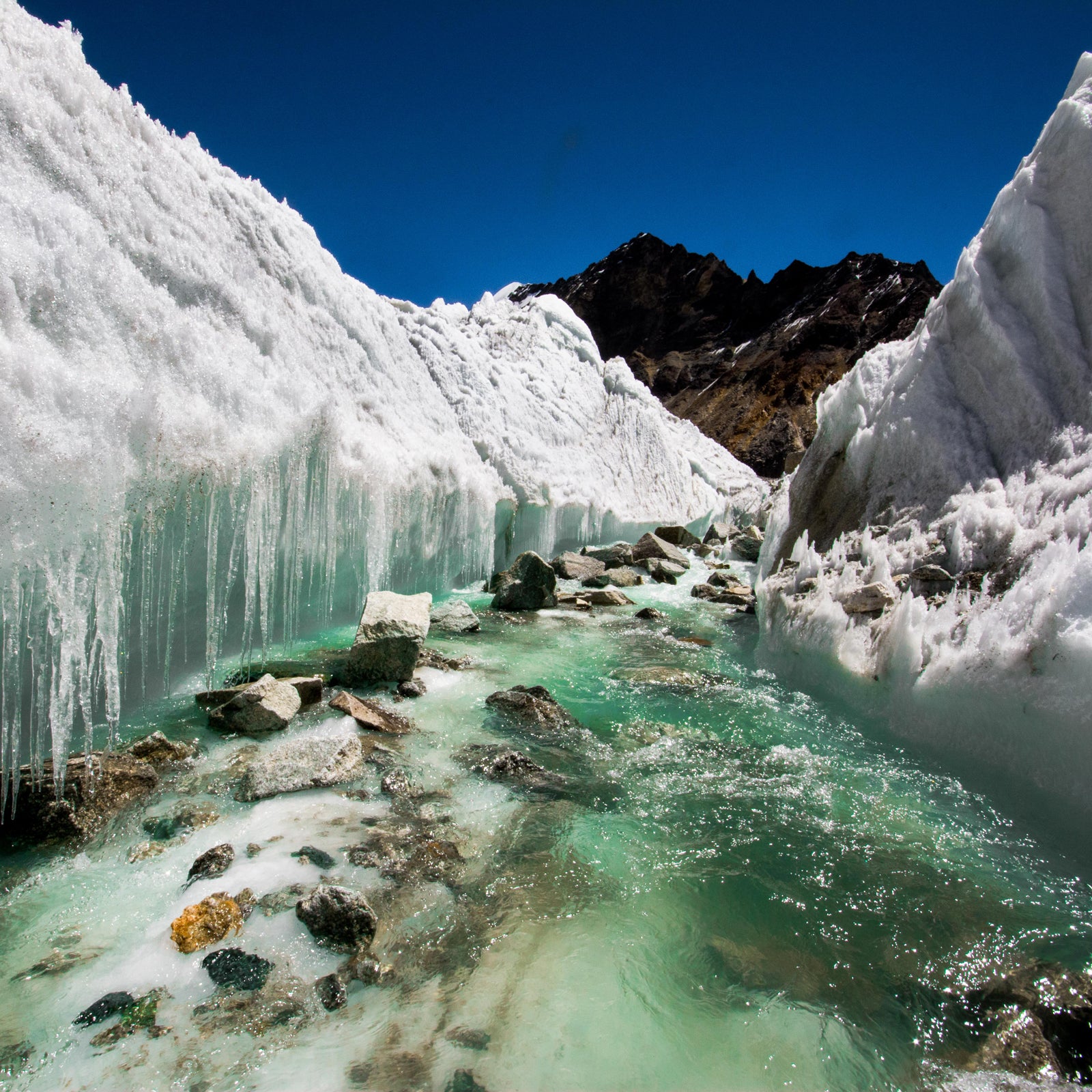A new study published this week in Science Advances offers one of the most comprehensive views of what’s happening to the glaciers in the Himalayas—and what it means for the people who live below them.
The study, led by Joshua Maurer, a Ph.D. candidate at Columbia University’s Lamont-Doherty Earth Observatory, analyzed 40 years worth of satellite images of around 650 glaciers across more than 1,200 miles of India, China, Nepal, and Bhutan. One of the largest ice loss studies to date (in both area and timespan), it not only confirms that climate change is the main contributing factor to glacial retreat in high-mountain Asia, but also reveals how fast rising temperatures are changing the face of the planet. According to the study, glaciers in the region have been losing the equivalent of more than a vertical foot and a half of ice each year since the turn of the millennia—which is twice the rate of melting between 1975 to 2000.
“Probably the most surprising thing [we found] would be the fact that we see such a similar amount of glacier melting across such a large and climatically complex region,” says Maurer. “That highlights the fact that there’s an overarching climate force affecting all these glaciers similarly.”
In recent years, that’s looked like an average of 8 billion tons of water per year—equal to 3.2 million Olympic-size swimming pools—flowing out of the region, which presents a couple of new problems: first, too much water, and then not enough. According to Maurer, as meltwater increases, glacial lake outburst floods (GLOFs), or catastrophic bursts of overflow from previously contained glacial meltwater, will start to be a serious threat. (One GLOF in Bhutan killed 21 people in 1994. Nepal’s Imja Tsho, a glacial lake in the Khumbu Valley, was subject to an emergency draining in 2016 to reduce flood risk.) Then, as the glaciers continue to retreat, the water they provide to nearly 2 billion people is projected to dwindle, and, eventually, disappear.
Another study, conducted by the International Center for Integrated Mountain Development and published in February 2019, had similarly alarming claims: even if the entire world’s global emissions were net zero by 2050, one-third of the Hindu Kush-Himalaya region’s ice would still melt. If the world doesn’t reach net zero, we could see the loss of up to two-thirds of the ice in that region by 2100.
In high-mountain Asia, occasionally referred to as “the third pole” because it contains the most ice in one region after the actual poles, the melting has gotten macabre. On Everest, the bodies of dead climbers are melting out of the ice, sparking debates on what to do with them. Human waste on the world’s highest peaks is also proving to be a biohazard problem, contaminating water sources as it thaws.
Maurer says that despite the depressing news, we need studies like this to prepare ourselves for what’s coming.
“With climate change studies, it’s always bad news,” he says. “But they’re necessary so that we know what we can expect in terms of future change.”

